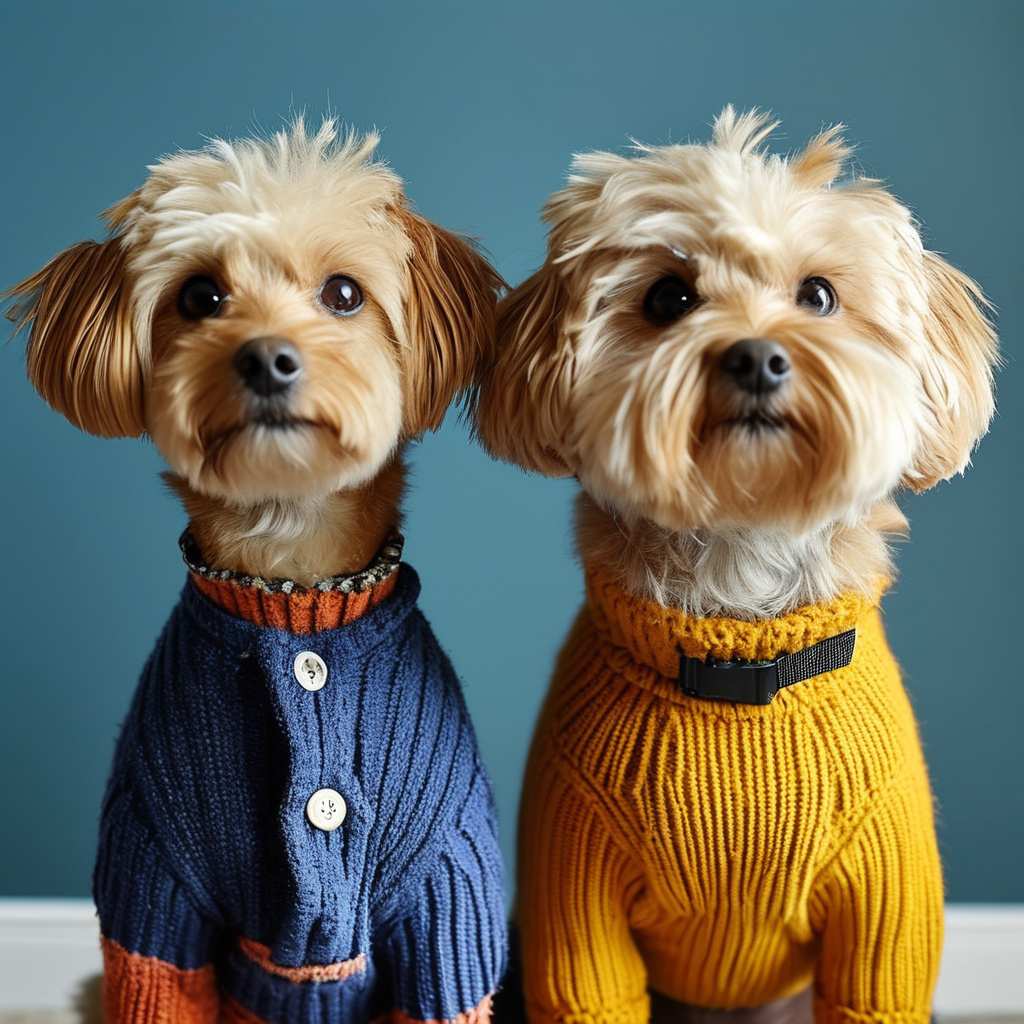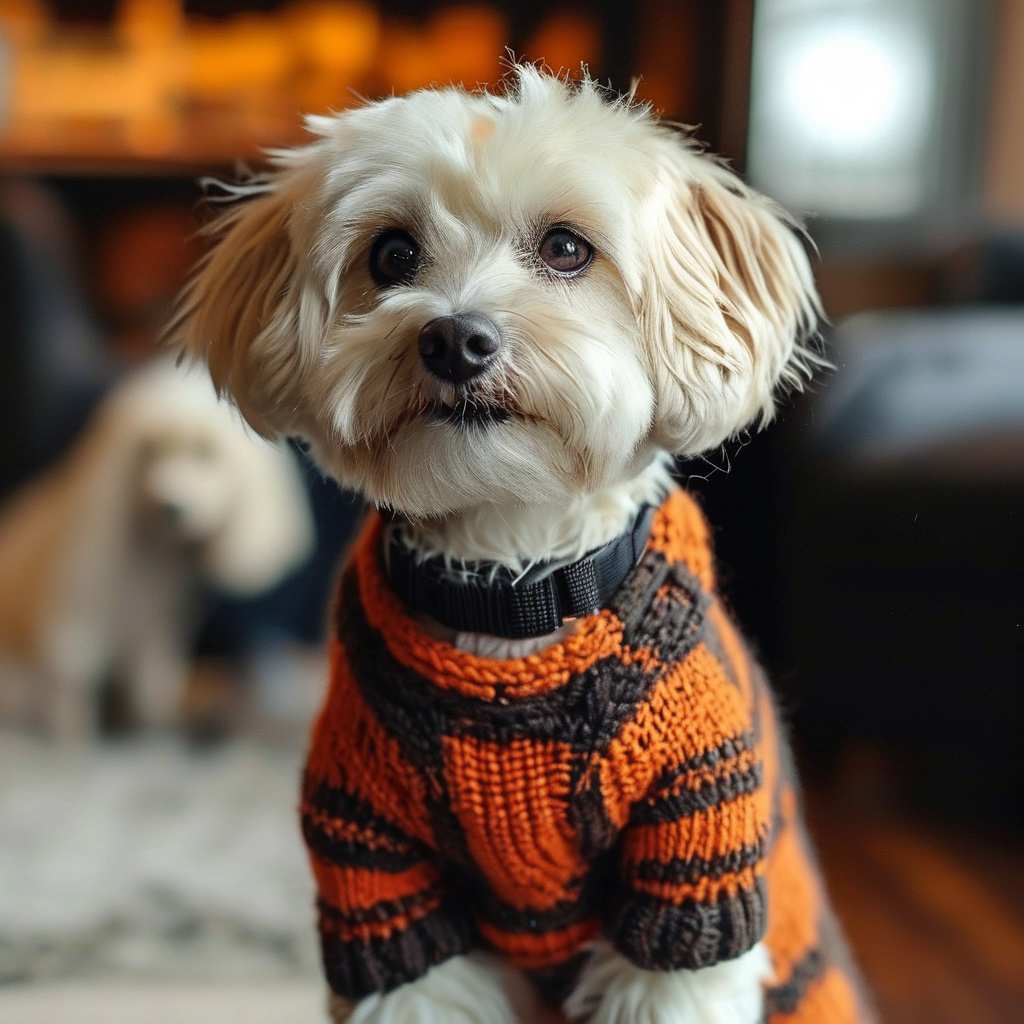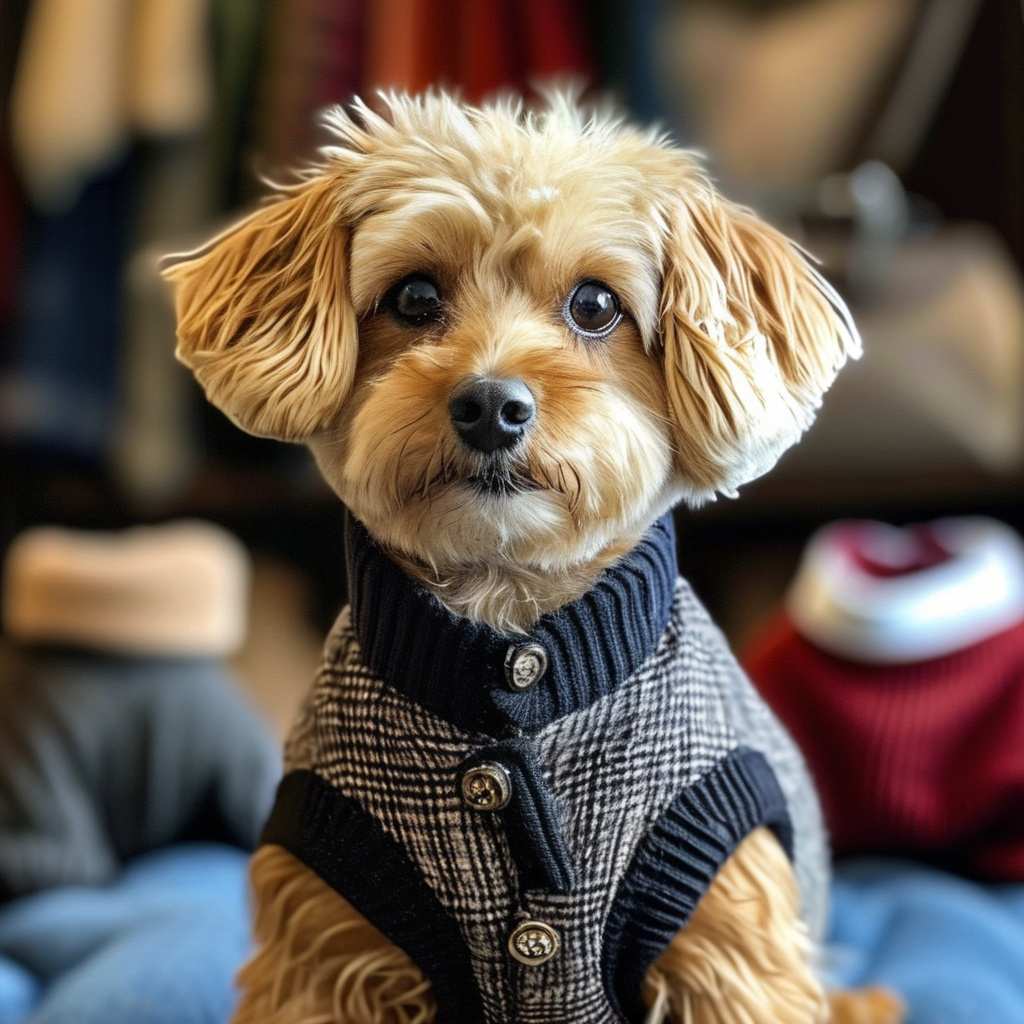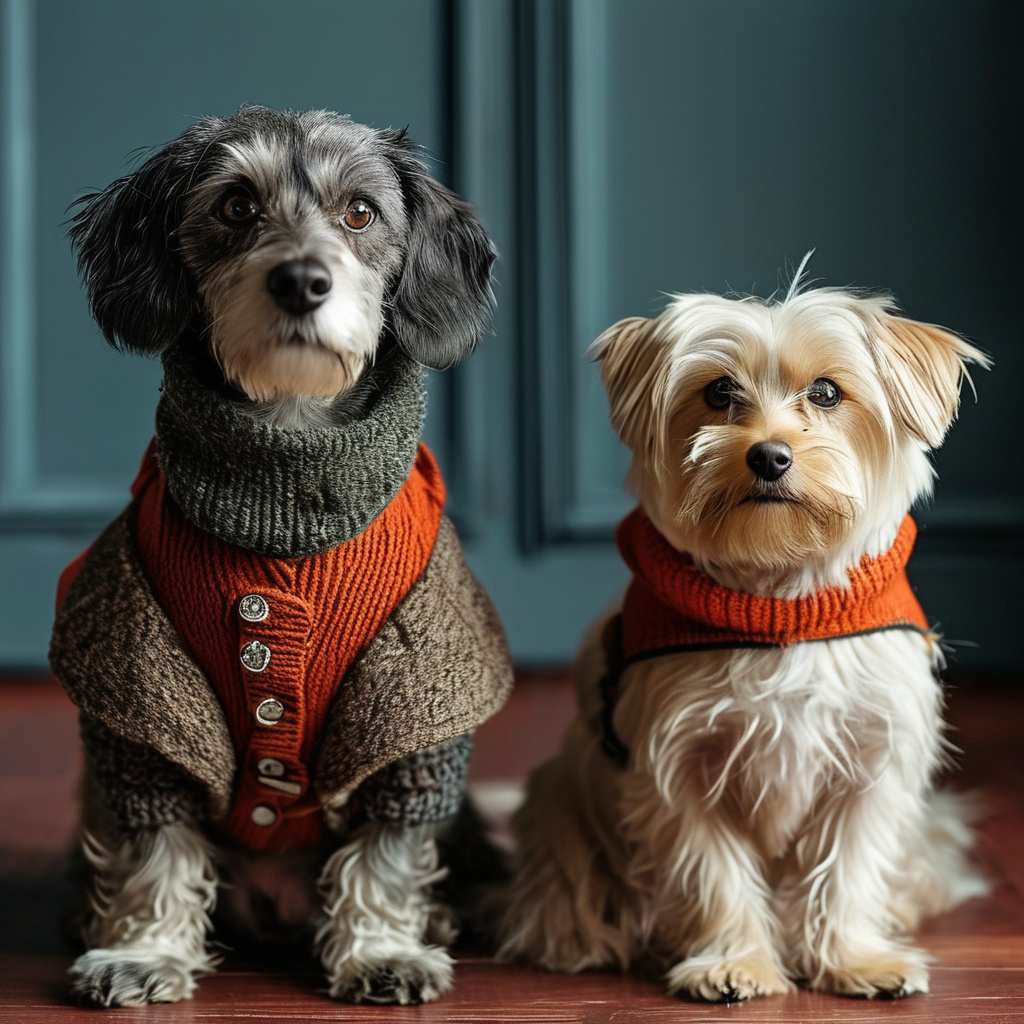 Introduction: Dog clothing has gained significant popularity among pet owners, especially in Poland, blending both practicality and style. Initially designed to provide dogs with protection against cold and rain, modern dog fashion now includes a wide array of garments, from casual sweaters and raincoats to safety-enhancing reflective gear. However, it’s essential to balance the aesthetic appeal with your dog’s comfort, as wearing clothes isn’t a natural experience for them. By selecting the right fit and type of clothing and gradually introducing it to your dog, you can ensure your pet stays cozy, protected, and stress-free.
Introduction: Dog clothing has gained significant popularity among pet owners, especially in Poland, blending both practicality and style. Initially designed to provide dogs with protection against cold and rain, modern dog fashion now includes a wide array of garments, from casual sweaters and raincoats to safety-enhancing reflective gear. However, it’s essential to balance the aesthetic appeal with your dog’s comfort, as wearing clothes isn’t a natural experience for them. By selecting the right fit and type of clothing and gradually introducing it to your dog, you can ensure your pet stays cozy, protected, and stress-free.
Dog clothes have recently won the hearts of Polish dog lovers. It works well in many situations and on many occasions. When it was created, its main purpose was to provide dogs with thermal comfort and to protect them from rain and adverse weather conditions. Today, brands that design dog clothes offer a much wider range and also an aesthetic look, from casual clothes – such as jackets, suits, and dresses – to those that increase safety – clothing with reflective elements.
Related Post: Everything You Need to Know About the Lively and Lovable Miniature Schnauzer
However, it is important to remember that an additional layer or wearing something is not natural for dogs. There is always a certain amount of discomfort involved. So, it’s worth learning the secrets of clothing so that your dog feels as little discomfort as possible.
 Dog clothing – a fashion or a necessity?
Dog clothing – a fashion or a necessity?
New breeds of dogs are often less and less adapted to bad weather conditions. They feel most comfortable in a warm home next to their owner. During walks, they shiver cold and wet under the influence of heavy rain. Their paws become irritated, and the dog becomes less and less willing to go out, even for a short time. This is the time to help your pet by providing it with protective clothing and shoes. You can rekindle the desire and joy of walking, and the caretaker will have less to clean up after a wet, unpleasant outing. The clothing is also recommended for those animals that have skin problems and for older dogs. The skinny breeds, with very short and rare hair, need help to survive the coldest periods. In the fight against wet weather, dogs with very thick and long fur will be truly grateful for your support.
Related Post: Veterinary Osteopathy: A Holistic Approach to Animal Health and Wellness
How do I choose the right clothing for my dog?
Dog clothing comes in a wide variety of styles, sizes, colours and patterns. However, they can be divided into several groups, partly based on the additional functions they perform. These include
Coats and jackets for dogs – the largest group. They are mainly made for cold and very cold outings, so they usually have a top layer or warm lining. They insulate well and keep the body warm. Some of the garments available are also windproof and waterproof.
Sweaters – they are made of nice and comfortable material. The best garments available are those that cling to the body. They work well as a cover for spring or fall weather and can also be a great addition to a jacket or raincoat, for example, to better protect your dog from the cold.
Rainwear: Coats and capes are garments that primarily protect against wind and rain. They are usually made of a thin, waterproof material without a lining. They may not retain body heat well, but they can be used as a stand-alone outfit or as a sweater or coat with a collar. Their lightweight construction means they take up little space when folded and fit into a bag or pocket.
Turtlenecks – These are lighter than jackets. They are usually made of knit fabric, so they do not protect your dog from getting wet. Their function is to keep the dog’s neck and throat warm. Sometimes they come in the form of a collar itself, and sometimes as an entire sweatshirt.
 When choosing the perfect pet clothing, there are a few things to consider. The outerwear should not have any metal parts that touch the dog’s body. It is good if the cuffs are soft and the garment has a hole where the leash or harness can be attached. The type of fastener used is important to the groomer. The simpler and quicker, the better. However, the most important thing to consider when choosing a garment is the size and how it fits your dog’s body.
When choosing the perfect pet clothing, there are a few things to consider. The outerwear should not have any metal parts that touch the dog’s body. It is good if the cuffs are soft and the garment has a hole where the leash or harness can be attached. The type of fastener used is important to the groomer. The simpler and quicker, the better. However, the most important thing to consider when choosing a garment is the size and how it fits your dog’s body.
Related Post: Essential Tips for Creating a Happy and Healthy Home for Your Hamster
For some brands, such as Doggy Dolly, the size is fixed and does not change much. Each size is based on the dog’s length and chest measurement. This is the most convenient and quickest solution for the groomer. However, it does result in a large inventory and a large range that a given size must adhere to.
Other brands have variable sizes. For example, Trixie may have the same size that varies in length or width. Different types of clothing (jackets, coats, sweaters, etc.) may have different measurements. The advantage of this is that the clothing will fit the dog’s body more accurately, but you will have to be more careful when choosing clothing and measure your dog very carefully. An additional measurement, usually only given for high-collar or turtleneck clothing, is the neck size.
Related Post: Top 10 Common Feline Ailments That Require Veterinary Attention
The two sizes suggested by Trixie or Doggy Dolly are fairly accurate, although there are some differences. Some brands only consider the length of the dog when designing clothing. Clothes made this way are more versatile, fit most dogs of a certain length, and are the easiest to choose from. The disadvantage is likely to be the average fit to the dog’s body and movements. Clothing without the right chest size, seams, or cut can dig into sensitive areas – under the belly, in the groin, under the armpits – without providing protection from the wind and rain. In other words, ill-fitting clothing only does half the job.
How should you measure your dog when buying clothes?
When measuring your pet, there are a few steps you should follow to get the most accurate measurement possible. Manufacturers provide: body length and girth: chest, paw and neck measurements. What do these measurements mean and how do you get the right size?
 The length of a dog’s body (more specifically, its torso) is nothing more than the entire dog measured without the head and tail. The measurement should be taken at the pet’s neck, approximately behind the second cervical vertebra, and drawn to the base of the tail, approximately at the level of the dog’s sacrum. Clothing worn by the dog should end approximately 3-4 cm from the tail. Clothing that is too long on the back and, therefore, on the belly can restrict the dog’s movement and cause the clothing to become soiled when the dog defecates, especially in males.
The length of a dog’s body (more specifically, its torso) is nothing more than the entire dog measured without the head and tail. The measurement should be taken at the pet’s neck, approximately behind the second cervical vertebra, and drawn to the base of the tail, approximately at the level of the dog’s sacrum. Clothing worn by the dog should end approximately 3-4 cm from the tail. Clothing that is too long on the back and, therefore, on the belly can restrict the dog’s movement and cause the clothing to become soiled when the dog defecates, especially in males.
The chest measurement is taken by placing the tape around the widest part of the dog’s chest. The tape measure should not hang down or squeeze the dog.
Neck circumference should be measured horizontally around the level of the second cervical vertebra, below the Adam’s apple.
It is recommended that up to 2 inches (5 cm) be allowed around the neck and chest so that your dog is comfortable when walking.
The paw circumference should be measured under the armpit or in the dog’s groin.
For each of these measurements, the dog should be standing straight on a flat and level surface.
And level surface. His head and neck should be pointing forward. Muscles should be relaxed, and all paws should touch the ground.
How do you get your dog used to wearing clothes?
Dogs should be prepared to wear clothing from puppyhood. This practice will allow the dog to get used to its second skin and minimize the discomfort associated with it.
Once you’ve decided to buy clothes and chosen the right size, it’s time to introduce your dog to his new outfit. It is a good idea to show the dog his clothes and give him a moment to sniff them. After that, it is a good idea to reward your pet with a treat. The next step should be to slowly dress the dog and reward him. At this point, the dog may get nervous and try to get out of his clothes, so it is good to distract your dog’s attention with his favourite toy or keep him occupied by giving him your command. These sessions should be repeated daily, increasing the time each time. A relaxed, comfortable dog is ready to show off his new outfit on the street.
There is no question that you should not shave your dogs in the fall and winter and then dress them. Even the best outfit will not replace the animal’s fur. The coat has extraordinary properties and fulfils a number of tasks. Pets should not be deprived of their natural protective barrier.
Conclusion: Choosing the right clothing for your dog is about more than just fashion—it’s a matter of providing comfort, protection, and enhancing their overall well-being, especially in harsh weather conditions. Properly fitting garments, whether jackets, sweaters, or raincoats, can make a significant difference in your dog’s outdoor experience. It’s equally important to introduce clothes to your pet in a patient and positive manner to ensure their comfort. With the right approach, dog clothing can not only serve practical purposes but also rekindle your dog’s joy of walking, even in the most unfavorable weather.
FAQs:
- Why should I consider clothing for my dog?
Clothing helps protect your dog from harsh weather conditions such as cold, rain, or wind, and it’s particularly beneficial for dogs with thin coats, skin issues, or elderly dogs. - What types of dog clothing are available?
Dog clothing includes coats, jackets, sweaters, rainwear, and turtlenecks, each designed for specific weather conditions and purposes like warmth, waterproofing, or safety. - How do I measure my dog for the right clothing size?
Measure your dog’s body length, chest circumference, neck circumference, and paw size. Make sure to allow a few centimeters for comfort and movement. - Can dog clothing cause discomfort?
Yes, if not fitted properly, clothing can cause discomfort by digging into sensitive areas like the armpits or groin. It’s important to choose well-fitting clothes that don’t restrict movement. - How can I help my dog get used to wearing clothes?
Introduce clothing gradually, allowing your dog to sniff it first. Reward them with treats, and slowly increase the amount of time they wear it while offering distractions like toys. - Do all dogs need clothing in cold weather?
Not all dogs need clothing, but those with short coats, older dogs, or dogs with health conditions may benefit from extra protection in colder or rainy weather. - Is it okay to shave my dog and use clothing in the winter?
No, shaving your dog in the winter is not recommended. A dog’s natural fur provides protection, and even the best clothing cannot fully replace their natural coat.